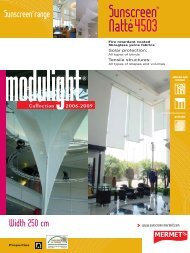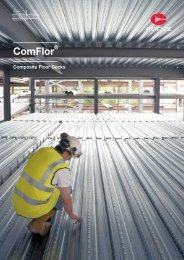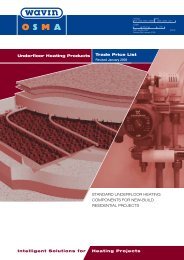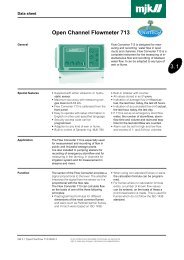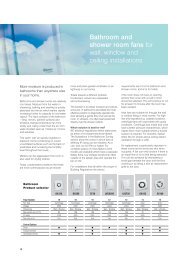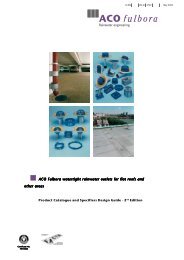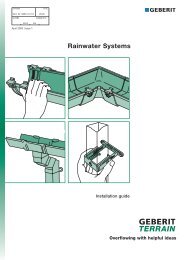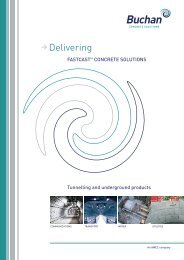Nilvent breathable membrane for unventilated pitched roofs - CMS
Nilvent breathable membrane for unventilated pitched roofs - CMS
Nilvent breathable membrane for unventilated pitched roofs - CMS
You also want an ePaper? Increase the reach of your titles
YUMPU automatically turns print PDFs into web optimized ePapers that Google loves.
Installation in a Horizontal Orientation on a<br />
Discontinuous Substrate<br />
Start installation at the eaves. Fit an eaves strip of a UV–resistant<br />
material to overhang the eaves/fascia by 50–60 mm. Lap the<br />
Kingspan nilvent ® logo–up over the eaves strip (if required),<br />
with the bottom edge of the Kingspan nilvent ® in line with the<br />
top of the fascia. Kingspan nilvent ® and the eaves strip should<br />
be laid in such a manner as to create a valley between rafters<br />
(Figure 3a) or counter battens (Figures 3b–3c) to allow water<br />
drainage. Temporarily tack in place with staples or clout nails<br />
and cut to length with a sharp bladed knife.<br />
The second run of Kingspan nilvent ® should lap over the top<br />
of the first by the distance shown in the table below.<br />
Rafter pitch (degrees) Minimum lap (mm)<br />
12.5 – 14 225<br />
15 – 34 150<br />
> 35 100<br />
The printed tramlines on the top surface of Kingspan nilvent ®<br />
indicate a distance of 150 mm.<br />
Kingspan nilvent ® draped over<br />
timbers in horizontal runs<br />
Kingspan nilvent ®<br />
lapped over eaves strip<br />
Eaves strip<br />
Line of rafter<br />
Figure 6a Eaves – Draped Horizontal Installation<br />
Line of rafter<br />
Kingspan nilvent ® draped over<br />
timbers in horizontal runs<br />
Figure 6b Ridge – Draped horizontal installation<br />
9<br />
It may not be practical to attempt to seal the laps between the<br />
runs of Kingspan nilvent ® .<br />
Vertical laps between lengths of Kingspan nilvent ® should be<br />
not less than 100 mm wide and be positioned so as to coincide<br />
with a rafter or counter–batten position. These laps will be<br />
secured and sealed by the later fixing of the tile/slate battens.<br />
Avoid vertical laps over the same rafter or counter–batten<br />
position in successive runs of Kingspan nilvent ® .<br />
Continue installation up the roof in the same manner to the<br />
ridge. Install tile/slate battens in the usual manner as proves<br />
necessary to fully fix the Kingspan nilvent ® in place and to<br />
provide a support <strong>for</strong> moving up the roof.<br />
Lap over the ridge by not less than 150 mm each side (total<br />
over lap of 300 mm).<br />
Complete the installation of tile/slate battens over the whole<br />
area installed.<br />
NB Kingspan nilvent ® can be laid taut without draping on a discontinuous substrate.<br />
In which case, install as in the method (shown on page 6) <strong>for</strong> horizontal installation on a<br />
continuous substrate. Effective taping of joints will prove extremely difficult.<br />
Rafters/counter battens <strong>for</strong>ming a<br />
discontinuous substrate<br />
Vertical lap not less than 100 mm<br />
wide and positioned over a rafter<br />
Second run of Kingspan nilvent ®<br />
lapping over first by 225/150/100<br />
mm (depending on pitch)<br />
Horizontal lap joint<br />
Rafters/counter battens <strong>for</strong>ming a<br />
discontinuous substrate<br />
Kingspan nilvent ® lapped over<br />
ridge by 150 mm (min)



